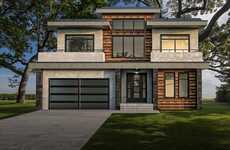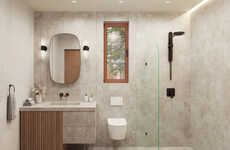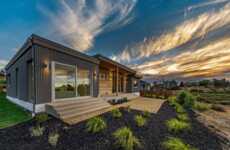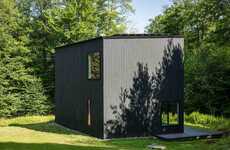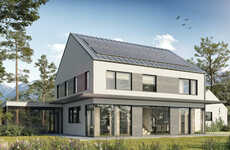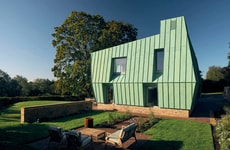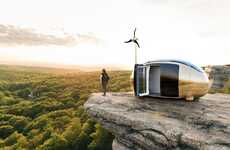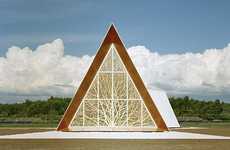
The ZeroHome 2.0 Reinvents the Typical American House
Omar Yusuf — September 28, 2011 — Eco
References: kbhome & treehugger
The ZeroHome 2.0 makes it abundantly clear that building an environmentally sound home amounts to more than slapping on a pair of solar cells. Instead, you have to rebuild and redesign the entire edifice from start to bottom, and the ZeroHome 2.0 shows us how.
Beyond the state-of-the-art solar panels installed on the roof, this concept house looks relatively inconspicuous, but design studio KH Homes has made it abundantly clear that most of the eco-friendly changes are hidden, between the walls or outright invisible. Insulation, a rain-catching system and a solar-powered water heater all help this model building reach carbon neutrality very quickly. Best of all, when operating under normal use, the ZeroHome 2.0 is expected to supply surplus electricity -- imagine receiving a payment from the electric company!
Beyond the state-of-the-art solar panels installed on the roof, this concept house looks relatively inconspicuous, but design studio KH Homes has made it abundantly clear that most of the eco-friendly changes are hidden, between the walls or outright invisible. Insulation, a rain-catching system and a solar-powered water heater all help this model building reach carbon neutrality very quickly. Best of all, when operating under normal use, the ZeroHome 2.0 is expected to supply surplus electricity -- imagine receiving a payment from the electric company!
Trend Themes
1. Sustainable Construction - Opportunity for developing eco-friendly building materials and methods that go beyond solar power.
2. Hidden Eco-friendly Features - Opportunity to innovate and integrate sustainability features in homes that are discreetly incorporated into the design.
3. Positive Energy Homes - Opportunity for homes to generate surplus electricity and contribute to the grid, creating potential revenue streams for homeowners.
Industry Implications
1. Construction - Disruptive innovation opportunities in developing sustainable materials and rethinking traditional building practices.
2. Renewable Energy - Opportunity to develop innovative solar-powered systems and technologies for residential and commercial use.
3. Smart Home Technology - Opportunity to integrate sustainability features seamlessly into smart home systems, providing energy-efficient solutions for homeowners.
2.6
Score
Popularity
Activity
Freshness


